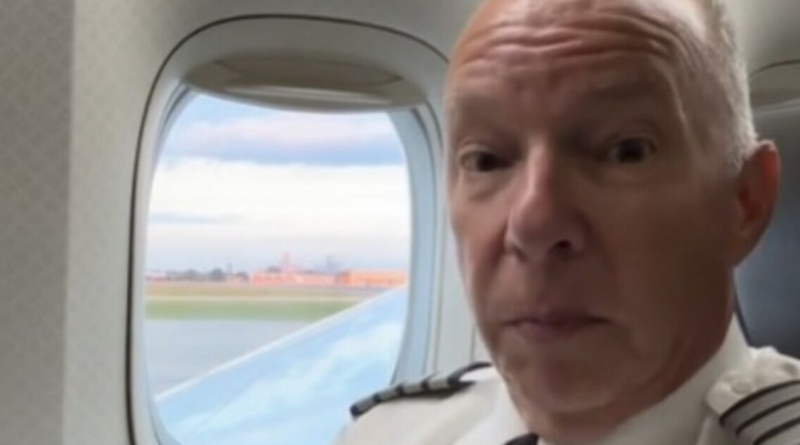Travellers are only just realising grim truth behind rounded windows on planes – Express

American Airlines pilot, Captain Steve (@captainsteeeve) uses his TikTok account to offer an insight into life on board his Boeing 777 passenger jets, and his latest video revealed a dark truth about engineering evolution. “Did you ever wonder why the passenger windows are rounded at the edges and not square?” he asked his 49,000 followers.
Captain Steve continued, explaining the design was implemented in the 1950s following a series of disasters. “Some of the airliners [then] were designed with square windows and over in Europe as aeroplanes started to climb higher and require more pressurisation, they discovered a problem,” he said, sat in a window seat.
“The lost a few planes in mid-air – they literally came apart,” Captain Steve reflected. He went on to reveal this was down to their square windows creating a “little hairline crack” right in the edge.
“Enough of those cracks created because of the stress on the airframe from the pressurisation – the airframes actually came apart,” he grimly detailed. “So in the analysis afterwards, they said. ‘We’re going to engineer these things different – make them round’.”
Read more… ‘I’m a cruise ship crew member – life on board is quite exciting’
Why Airplane Windows Are Rounded: The Surprising Truth Discover the fascinating reason behind the rounded edges of airplane windows. This design change, rooted in safety concerns from the 1950s, prevents catastrophic failures during flight. Join Captain Steve as we explore this crucial engineering evolution. #AirplaneSafety #AviationHistory #EngineeringMarvels #FlightSafety #AerospaceEngineering #CaptainSteve #AirTravelFacts #DesignInnovation #AviationLovers #TravelKnowledge
Captain Steve closed, explaining this made them stronger, reduced the risk of cracking and said there’s “never been a problem since”.
“I’m a terrified flight passenger!” admitted one of his followers. “But, after watching your TT’s, Captain Steve, I wasn’t so terrified last week on my flights. Thank you!” A second person concurred: “Thanks for the explanation! The more I know, the easier it is to fly.”
A third person confessed: “And here I always thought it was just for aesthetics. That is fascinating. Thank you, Captain.” And a fourth praised: That’s good info to know, that’s pretty interesting.”
Elsewhere in the comments section, meanwhile, others cited disasters involving the de Havilland Comet aircraft as a catalyst for the change. “I believe the British de Havilland Comet, was the early culprit,” one TikTok user speculated. “By 1954, several of the Comets crashed from metal fatigue leading to explosion decompression.”
Don’t miss…
Europe’s top 10 most festive Christmas markets to visit in December
European capital city named ‘cheapest Christmas market’ five years running
Man who ditched UK for Spain says you need one asset to live happily abroad
We use your sign-up to provide content in ways you’ve consented to and to improve our understanding of you. This may include adverts from us and 3rd parties based on our understanding. You can unsubscribe at any time. Read our Privacy Policy
While a second agreed: “The Comet was a beautiful design, but such a horrible fate due to those windows.”
According to The Museum of Flight, two de Havilland Comets were involved in takeoff accidents in which the wing was stalled during the takeoff run, while another was lost in a violent tropical storm following departure from Calcutta, India.
The website adds: “Most significantly, in May 1953 and January 1954, two Comets mysteriously disintegrated in mid-air over the Mediterranean Sea. The fleet was grounded during an exhaustive investigation, which identified metal fatigue and failure of the cabin structure as the cause. The flaw was corrected and new Comet variants eventually entered production again.”
SEARCH
CONNECT WITH US
TODAY’S PAPER
See today’s front and back pages, download the newspaper, order back issues and use the historic Daily Express newspaper archive.
EXPRESS.CO.UK
Would you like to receive news notifications from Daily Express?



 This year in odd news: The weirdest headlines from the Houston area in 2022 – KPRC Click2Houston
This year in odd news: The weirdest headlines from the Houston area in 2022 – KPRC Click2Houston 